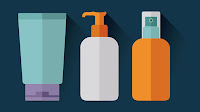SUSTAINABLE PALM OIL

What are the problems surrounding palm oil in cosmetics? At Codibel’s lab we have recently received many questions regarding the use of palm oil in cosmetics. It is known that the uncontrolled development of palm oil plantations can contribute significantly to deforestation, loss of biodiversity and habitat and can even influence climate change from the loss of peatland. We at Codibel share the widespread concern about these issues and are committed to reducing the impact on the environment. The purpose of this blog is to explain why palm (kernel) oil and its derivatives are used in cosmetics, where you are likely to find these ingredients, and how to choose a product correctly to ensure you can support us in our strive to reduce the massive problem of deforestation associated with indiscriminate palm oil farming. Palm oil and palm kernel oil are very versatile vegetable oils, and palm oil trees produce higher yields per hectare,...


